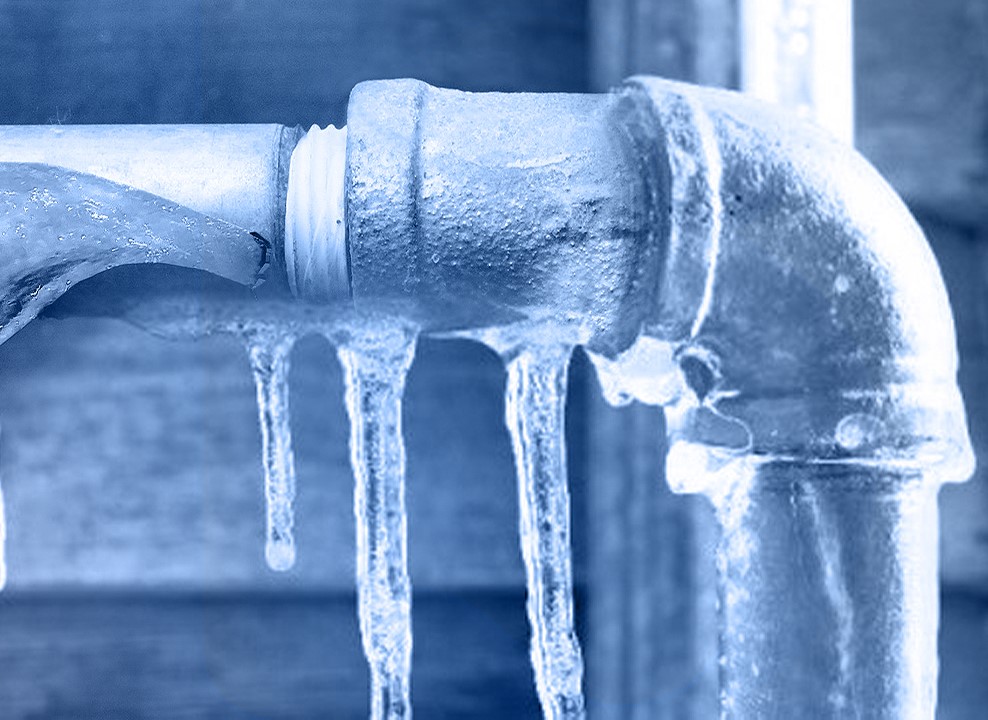This article following next in relation to Winter Plumbing Precautions: Preventing Frozen Pipes is without a doubt informative. Check it out for yourself and see what you think of it.

Winter can wreak havoc on your pipes, particularly by freezing pipes. Below's how to avoid it from happening and what to do if it does.
Introduction
As temperature levels drop, the danger of icy pipelines increases, potentially causing pricey repairs and water damage. Comprehending just how to stop frozen pipes is essential for house owners in cool environments.
Recognizing Icy Pipelines
What creates pipes to freeze?
Pipes ice up when revealed to temperature levels listed below 32 ° F (0 ° C) for extended durations. As water inside the pipelines freezes, it increases, putting pressure on the pipe wall surfaces and potentially causing them to break.
Dangers and damages
Frozen pipes can bring about supply of water disruptions, building damages, and pricey repairs. Burst pipes can flood homes and cause comprehensive structural damage.
Indications of Frozen Pipeline
Determining frozen pipes early can prevent them from bursting.
How to recognize icy pipelines
Try to find decreased water flow from taps, uncommon odors or sounds from pipelines, and noticeable frost on exposed pipelines.
Avoidance Tips
Insulating susceptible pipelines
Cover pipelines in insulation sleeves or use heat tape to safeguard them from freezing temperature levels. Concentrate on pipelines in unheated or outside locations of the home.
Heating strategies
Keep interior rooms adequately warmed, specifically areas with plumbing. Open closet doors to enable cozy air to circulate around pipelines under sinks.
Protecting Exterior Plumbing
Garden hose pipes and exterior faucets
Separate and drain pipes garden pipes prior to winter season. Install frost-proof spigots or cover exterior faucets with shielded caps.
What to Do If Your Pipes Freeze
Immediate actions to take
If you think icy pipes, keep taps open to ease stress as the ice melts. Use a hairdryer or towels soaked in hot water to thaw pipes gradually.
Long-Term Solutions
Architectural modifications
Think about rerouting pipelines away from outside wall surfaces or unheated locations. Include extra insulation to attics, cellars, and crawl spaces.
Updating insulation
Invest in top notch insulation for pipelines, attics, and walls. Correct insulation aids keep consistent temperatures and decreases the risk of icy pipes.
Conclusion
Preventing icy pipes requires aggressive procedures and quick feedbacks. By understanding the reasons, signs, and safety nets, home owners can safeguard their pipes during winter.
5 Ways to Prevent Frozen Pipes
Drain Outdoor Faucets and Disconnect Hoses
First, close the shut-off valve that controls the flow of water in the pipe to your outdoor faucet. Then, head outside to disconnect and drain your hose and open the outdoor faucet to allow the water to completely drain out of the line. Turn off the faucet when done. Finally, head back to the shut-off valve and drain the remaining water inside the pipe into a bucket or container. Additionally, if you have a home irrigation system, you should consider hiring an expert to clear the system of water each year.
Insulate Pipes
One of the best and most cost-effective methods for preventing frozen water pipes is to wrap your pipes with insulation. This is especially important for areas in your home that aren’t exposed to heat, such as an attic. We suggest using foam sleeves, which can typically be found at your local hardware store.
Keep Heat Running at 65
Your pipes are located inside your walls, and the temperature there is much colder than the rest of the house. To prevent your pipes from freezing, The Insurance Information Institute suggests that you keep your home heated to at least 65 degrees, even when traveling. You may want to invest in smart devices that can keep an eye on the temperature in your home while you’re away.
Leave Water Dripping
Moving water — even a small trickle — can prevent ice from forming inside your pipes. When freezing temps are imminent, start a drip of water from all faucets that serve exposed pipes. Leaving a few faucets running will also help relieve pressure inside the pipes and help prevent a rupture if the water inside freezes.
Open Cupboard Doors
Warm your kitchen and bathroom pipes by opening cupboards and vanities. You should also leave your interior doors ajar to help warm air circulate evenly throughout your home.
:strip_icc()/snow-outdoor-faucet-pipes-4af65d1e5e904fb1aa7bf74071fe5d89.jpg)
Do you like more info about Prevent Frozen Pipes ? Leave a review below. We will be delighted to hear your views about this content. We are looking forward that you visit us again before long. Do you know anybody else who is occupied with the niche? Feel free to promote it. I enjoy your readership.
Or Book Technician Here
Comments on “Protecting Against Frozen Plumbing: Top Methods for Cold Weather”